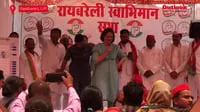Fratricidal Killings Amongst Kuki Groups: Governor’s Removal and Its Implications
Introduction
The recent turmoil involving fratricidal killings among Kuki groups has prompted significant political and social repercussions, notably the removal of the Governor. This essay explores the context of the internal conflicts within the Kuki community, the reasons behind the Governor’s removal, and the broader implications for regional stability and governance.
Table of Contents
Background on Kuki Conflicts
The Kuki community, residing predominantly in the northeastern states of India, has historically been a cohesive group with strong social and cultural bonds. However, recent years have witnessed a disturbing trend of internal conflicts that have escalated into violent confrontations. These conflicts, often driven by disagreements over political representation, resource allocation, and territorial disputes, have led to fratricidal killings within the community.
Nature of the Killings
The fratricidal killings among Kuki groups are marked by intense violence and tragic loss of life. These incidents reflect deeper issues of factionalism and competition for power and resources. While the exact triggers for these killings can vary, underlying grievances related to leadership disputes, claims over land, and socio-economic inequalities often play a significant role. The resulting violence has not only caused immense suffering to the affected families but also disrupted community cohesion and stability.
Governor’s Role and Removal
The removal of the Governor has been a significant development in response to the escalating violence. The Governor’s role in mediating conflicts and maintaining law and order is critical, and the inability to effectively manage the situation has led to calls for accountability. Critics argue that the Governor’s removal was necessary due to perceived ineffectiveness in addressing the conflict and preventing further violence.
The Governor’s removal, however, is a complex issue. It involves assessing the extent of the Governor’s responsibility for the failures in managing the conflict and the political implications of such a decision. In some cases, the removal may be seen as a strategic move to placate the affected community and restore order, while in others, it could be viewed as a symbolic gesture with limited practical impact.
Political and Social Implications
The removal of the Governor and the fratricidal killings have broader implications for regional stability and governance. Politically, it underscores the challenges faced by state and central authorities in managing ethnic and community-based conflicts. The decision to remove the Governor can have repercussions on political alignments and governance strategies in the region.
Socially, the ongoing violence and instability have profound effects on the Kuki community and neighboring areas. The fratricidal nature of the killings exacerbates distrust and division within the community, making reconciliation efforts more challenging. Furthermore, the impact on local economies and infrastructure due to ongoing violence can hinder development and exacerbate existing grievances.
Efforts for Reconciliation and Resolution
Efforts to address the internal conflicts and fratricidal killings among Kuki groups must focus on comprehensive reconciliation and conflict resolution strategies. Engaging community leaders, implementing fair resource distribution mechanisms, and fostering dialogue between factions are essential steps. Additionally, support from state and central governments in terms of security measures and economic support can play a crucial role in stabilizing the region.
Conclusion
The fratricidal killings among Kuki groups and the subsequent removal of the Governor highlight the complexities of managing ethnic and community-based conflicts. While the removal of the Governor represents a response to the escalating violence, it is crucial to address the root causes of the conflict through effective reconciliation and governance strategies. Ensuring long-term stability in the region requires a concerted effort from all stakeholders to address grievances, promote unity, and support affected communities.








